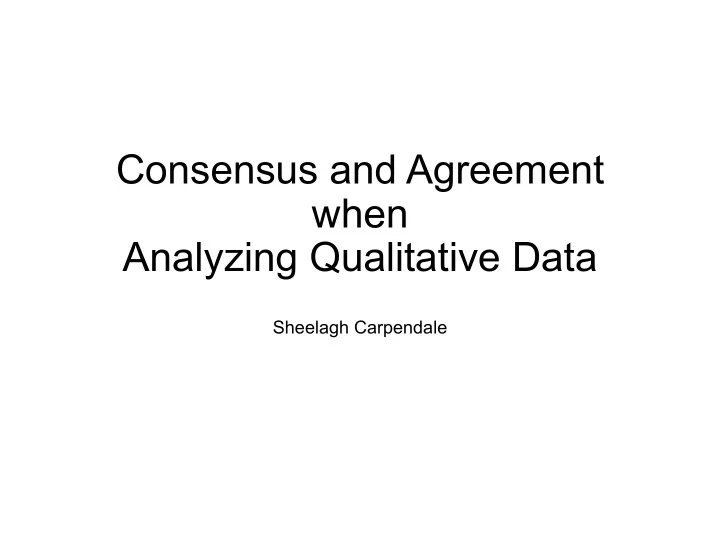

Consensus and Agreement when Analyzing Qualitative Data Sheelagh Carpendale
what is the goal?
understand the real world a little better
understand the real world a little better usually constrained to be about a very small part of the real world
try to see what is really in your data
one coder ….
Why more than one coder? ‒ because it is so much work ‒ because you might miss something ‒ because two sets of eyes are better than one ‒ because two perspectives are better than one ‒ because discussing your data is rich and enriching
What if you disagree? ‒ It needs to be discussed ‒ Can lead to a better understanding ‒ Can lead to more coding ‒ Can lead to starting over ‒ Can lead to a another focus ‒ …
What about inter-coder agreement? ‒ People are different ‒ Discrepancies between coders will occur ‒ Can lead to more coding ‒ Can lead to starting over ‒ Can lead to a another focus ‒ …
Consensus? ‒ While some stats may tell you agreement is close enough ‒ In my experience discussions often continue until consensus ‒ As in grounded theory it is out of these discussions, re- examinations, and continued discussions that sometimes theory can emerge from the data .
rigorous qualitative study design needs constant re‐thinking
Another analysis opportunity particularly suited for this community
visualization!
Visualizing coding Uta Hinrichs and Sheelagh Carpendale. Making Sense of Wild Data: Using Visualization to Analyze In-the-Wild Video Records . In Research in the Wild workshop, DIS'12 , 2012.
visualization!
Recommend
More recommend